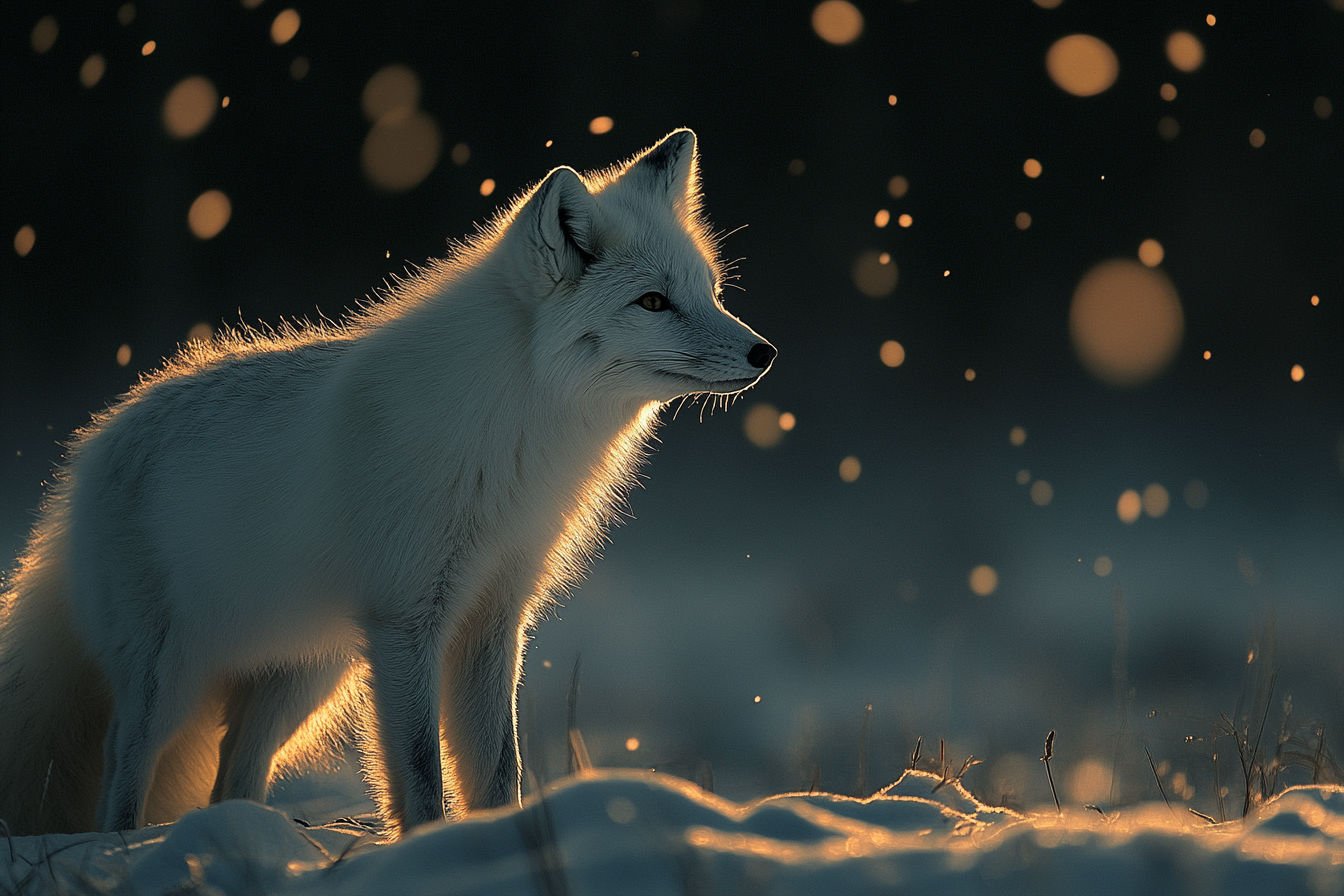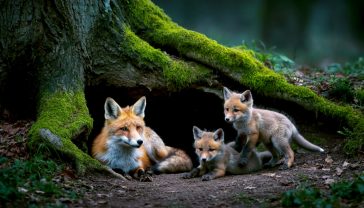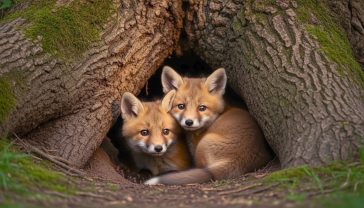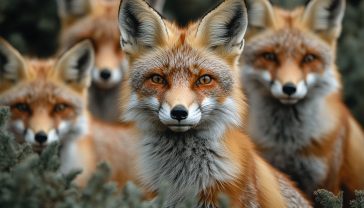What Do Arctic Foxes Eat? Understanding Their Survival Diet
Ever wondered how Arctic foxes find food in such a harsh environment? Explore their diverse diet and the strategies they use to survive the extreme Arctic conditions.

This post may contain affiliate links. If you make a purchase through these links, we may earn a commission at no additional cost to you.
When you picture the Arctic fox (Vulpes lagopus), you likely imagine a fluffy, white creature perfectly camouflaged against the snow. But beneath this adorable appearance lies a resourceful survivor, capable of thriving in one of the harshest environments on Earth. How? A large part of their success comes down to one crucial factor: diet.
So, what do Arctic foxes eat in the frozen tundra, where food is scarce and winters are brutal? The answer reveals a fascinating story of adaptability, cunning, and survival. Let’s dive into the seasonal shifts, opportunistic behaviours, and ecological roles that define the Arctic fox’s feeding habits.
Primary Diet Components: What Fuels the Arctic Fox?
The Arctic fox is an omnivore with a diet that shifts depending on season, location, and food availability. From hunting small mammals to scavenging the leftovers of larger predators, these foxes are masters of survival.
🐭 Lemmings and Voles: The Foundation of Their Diet
At the top of the Arctic fox’s menu? Lemmings. These small rodents are essential for survival, especially during the summer months when they are most abundant. In fact, in some regions, the reproductive success of Arctic foxes directly correlates with lemming populations—more lemmings mean more kits.
When lemmings are scarce, voles step in as an important alternative. Both prey types provide the high-energy nourishment necessary for raising young and preparing for winter.
🐣 Birds and Eggs: Nutrient-Rich Summer Delicacies
Summer in the Arctic brings a burst of life—and with it, ground-nesting birds such as snowy owls, geese, and ducks. Arctic foxes take full advantage, raiding nests for eggs and hunting young birds.
Eggs, rich in nutrients, are especially valuable during the breeding season, coinciding with the fox’s need to feed its growing kits. This synchrony ensures that Arctic fox families thrive when resources peak.
🐟 Fish and Marine Life: Coastal Bounty
For Arctic foxes living near coastlines, the ocean becomes a vital resource. Their diet expands to include:
- Fish
- Marine invertebrates
- Seabirds
These foxes expertly scavenge along shorelines, often finding dead fish, shellfish, and even marine mammals washed ashore. In the winter, when other food sources vanish, these coastal finds can mean the difference between life and death.
Isn’t it incredible how these adaptable foxes turn even the harshest environments into a buffet?
Seasonal Diet Variations: How Arctic Foxes Adapt
The Arctic tundra experiences dramatic seasonal changes, forcing Arctic foxes to constantly adapt their diets. Let’s explore how they shift strategies between summer abundance and winter scarcity.
🌿 Summer: A Short Window of Abundance
During the brief Arctic summer, life flourishes. Melting snow uncovers vegetation, and an influx of birds and small mammals provides ample hunting opportunities.
Arctic foxes:
- Hunt actively, focusing on lemmings, voles, and birds.
- Raid nests for nutrient-rich eggs.
- Cache surplus prey, burying it in the ground or under rocks to retrieve during winter.
These food caches act like natural pantries, essential for survival once the tundra freezes again.
❄️ Winter: The Harsh Test of Survival
Winter in the Arctic is unforgiving—temperatures plummet, and the landscape is blanketed in snow. Small mammals like lemmings become difficult to reach, hidden beneath deep snow layers.
How do Arctic foxes survive? They rely on:
- Scavenging the remains of caribou, seals, and whales left behind by polar bears and wolves.
- Following polar bears, feeding on the leftovers of seal hunts—a relationship that ensures nothing goes to waste.
- Digging through snow to uncover hidden lemmings or searching for trapped fish under ice.
Ever wonder what it takes to survive an Arctic winter? For the Arctic fox, it’s all about clever alliances and relentless determination.
Scavenging and Opportunistic Feeding: Survival by Any Means
The Arctic fox is the definition of an opportunistic feeder—eating whatever it can find, especially in lean times.
🦴 Scavenging: Making the Most of What’s Left
Scavenging is a lifeline in the Arctic. Foxes are often seen trailing behind polar bears, ready to claim the scraps from seal kills. This not only provides a reliable food source for the fox but also ensures no part of a kill goes to waste, maintaining the balance of the ecosystem.
🌿 Hunting Beyond Mammals: Flexibility is Key
While lemmings dominate the diet, Arctic foxes are far from picky. They’ll hunt or forage for:
- Insects
- Berries
- Plant material (especially in times of extreme scarcity)
In some cases, foxes have been observed digging through snow to uncover prey or fishing through ice, showcasing their ingenuity in finding food.
🏚 Human Influence: Adapting to New Realities
Where humans are present—near Arctic research stations or indigenous communities—Arctic foxes may scavenge from waste or discarded food. This behaviour highlights their remarkable adaptability, although it raises concerns about the impact of human activity on their natural behaviours.
It’s survival of the smartest, and the Arctic fox proves time and again that intelligence is its greatest asset.
Role in the Arctic Ecosystem: More Than Just Survivors
The Arctic fox is not just a survivor; it plays a vital role in maintaining the Arctic ecosystem’s balance.
🌿 Population Control: Keeping the Tundra in Check
By preying on small mammals like lemmings, Arctic foxes regulate rodent populations, preventing overgrazing of vegetation. When lemming populations surge, Arctic foxes respond by having larger litters, naturally adjusting to maintain ecosystem balance.
🦅 Prey for Larger Predators: A Link in the Food Web
While expert hunters, Arctic foxes are also prey. They form a critical link in the food web, sustaining larger Arctic predators such as:
- Polar bears
- Wolves
- Golden eagles
Their dual role as predator and prey makes them integral to the health of the Arctic ecosystem.
Conclusion: Masters of Adaptation in the Arctic
The Arctic fox (Vulpes lagopus) is a master of adaptation, thriving where few others can. Their diet—ranging from lemmings and birds to marine life and scavenged carcasses—demonstrates a remarkable ability to adjust with the seasons.
In the summer, they are active hunters, taking advantage of the tundra’s brief abundance. In the winter, they become strategic scavengers, following predators and tapping into cached food stores. Their opportunistic nature ensures survival in an environment that demands resilience, intelligence, and flexibility.
By understanding what Arctic foxes eat, we gain insight into how these incredible creatures have carved out a niche in one of the world’s harshest climates—and how vital they are to the balance of the Arctic ecosystem.
In the end, the Arctic fox teaches us a powerful lesson: survival isn’t just about strength; it’s about being smart, adaptable, and resourceful.






